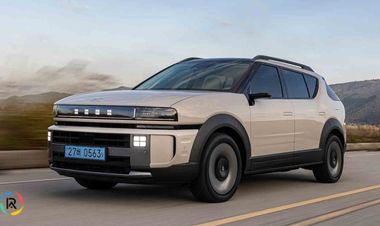India is preparing to implement the next phase of Corporate Average Fuel Efficiency (CAFE) norms from 2027 to 2030. These rules demand lower fleet CO₂ emissions, but the draft proposals suggest significant compliance benefits for vehicles powered by higher ethanol-blended fuels and strong hybrids.
These incentives — through ethanol-blend discounts and a higher Volume Derogation Factor (VDF) for hybrids — can greatly reduce an automaker’s declared carbon footprint, helping them meet targets even without a full EV transition. This has triggered a sharp divide among automakers.
Why the Industry Is Split
Supporters of Flex-Fuel & Hybrids Say
- Immediate real-world fuel efficiency gains
- Uses existing manufacturing base and fuel network
- Supports India’s ethanol economy, reduces oil imports
A major signal in this direction came when Toyota showcased its Brazil-developed flex-fuel strong-hybrid concept in India — a model capable of combining ethanol with hybrid power. Toyota believes this “multi-pathway” approach can accelerate India’s cleaner-mobility journey while keeping vehicles affordable.
Supporters of EVs Warn
- Too many credits could weaken EV compliance advantage
- Slower investments in battery localisation and charging infra
- May delay mass-market EV adoption, especially in cars
In short, hybrid and ethanol incentives could narrow the real and regulatory gap between ICE technology and EVs.
Sector-Wise Impact Outlook
In the passenger car segment, hybrids and flex-fuel vehicles are expected to gain traction in the mid and mass-market categories, while EV penetration may slow outside premium and urban regions.
For commercial vehicles, hybridisation and flex-fuel technologies are likely to serve as bridge solutions, improving fleet operating costs and uptime, even as electric LCVs and buses continue to expand in city applications.
In the two-wheeler market, ethanol-blended and efficient ICE models will remain competitive, while electric scooters and bikes sustain strong growth in metropolitan and logistics-focused segments.
Conclusion — The Common Citizen’s View
For the everyday buyer, the debate isn’t about policy mechanics — it’s about cleaner air, lower fuel costs, and reliable mobility. Flex-fuel and hybrids can offer savings today, while EVs promise even cleaner transport as the charging network and battery economics mature.
What truly matters is genuine compliance — rules must push real emission reductions, not just help companies meet targets on paper. If implemented with strict monitoring and clear accountability, India can adopt a balanced transition path: biofuels + hybrids + EVs, keeping affordability and sustainability at the core.
Need Clarity for Your Market Strategy?
These policy shifts will influence:
- Powertrain mix strategies
- CAFE compliance pathways
- Investment timing across EV, hybrid, and flex-fuel platforms
· Sales outlook for passenger vehicles, commercial vehicles, and two-wheelers







